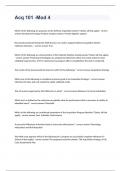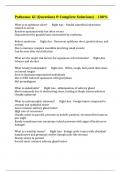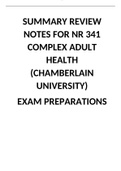Summary
Summary Biology topic 1 - 4 (Unit 1 - 4) model answers
- Institution
- PEARSON (PEARSON)
This document contains model answers for questions within biology topic 1 (lifestyle, health and risk), topic 2 (Genes and health), topic 3 (the voice of the genome), topic 4 (biodiversity and natural resources)
[Show more]












